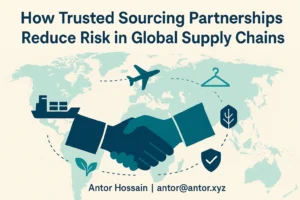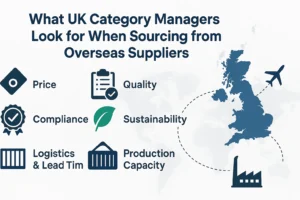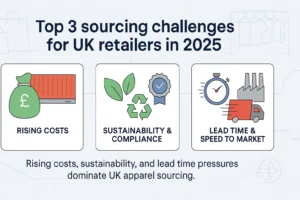
Creating a successful apparel product involves more than just great design. It requires a structured, end-to-end approach that seamlessly integrates product development, manufacturing, marketing, and sales. Whether you’re launching a new fashion brand or managing seasonal collections, understanding this process is key to ensuring quality, efficiency, and profitability.
Below is a detailed breakdown of the steps involved in taking a product or product line from initial concept to market success.
1. Market Research & Concept Development
Everything begins with understanding market demand. This involves:
- Analyzing consumer behavior and fashion trends
- Identifying market gaps and competitor strategies
- Defining the target audience and product positioning
- Building mood boards and inspiration decks
This phase ends with a clear product concept and business objective.
2. Design & Technical Development
Once the concept is solidified, the design team begins:
- Creating initial sketches or digital illustrations
- Choosing fabrics, trims, and construction details
- Developing tech packs — detailed documents with specifications
- Creating CAD files and colorways
A prototype or sample is then produced to visualize and test the concept.
3. Sourcing & Vendor Selection
Reliable sourcing is the backbone of quality and scalability. This stage includes:
- Selecting appropriate fabric suppliers, trim vendors, and manufacturers
- Requesting quotes, MOQs (Minimum Order Quantities), and lead times
- Ensuring compliance with ethical and sustainability standards
- Finalizing costings and timelines
In most cases, working with a sourcing partner (like Ethnotex Private Limited) helps streamline these operations.
4. Sampling & Fitting
Before going into bulk production, the following samples are developed:
- Proto Sample: To verify the initial concept
- Fit Sample: For garment fitting and corrections
- Pre-Production Sample (PP Sample): Final reference before bulk
Fittings are reviewed and adjusted until the garment meets brand standards and customer expectations.
5. Bulk Production
Once all approvals are secured, manufacturing begins. This process includes:
- Fabric inspection and cutting
- Sewing and stitching using industrial machinery
- Washing, dyeing, or special finishes (if required)
- Quality control (QC) checks at various stages
- Packing and labeling based on buyer requirements
A transparent and well-managed production process reduces delays and defects.
6. Logistics & Delivery
Efficient logistics ensures timely delivery to distribution centers or retail shelves. This involves:
- Coordinating with freight forwarders and customs agents
- Managing shipping documentation (e.g., invoices, packing lists, certificates of origin)
- Tracking cargo and managing timelines
- Delivering products via sea, air, or courier
Supply chain visibility at this stage is critical to avoid bottlenecks.
7. Marketing Strategy & Brand Positioning
Parallel to production, the marketing team works on:
- Creating brand messaging, product stories, and lookbooks
- Planning photoshoots and content creation
- Coordinating digital campaigns: social media, influencers, email marketing
- Preparing for launch via eCommerce platforms or retail partners
A compelling marketing narrative enhances product visibility and demand.
8. Sales Channels & Distribution
Products are now ready for sale through:
- Retail Stores (brick-and-mortar or franchises)
- Wholesale partners and B2B platforms
- eCommerce websites and marketplaces
- Pop-ups and brand activations
Sales performance is monitored and informs the next round of product development.
9. Post-Sales Analysis & Feedback Loop
After launch, brands analyze:
- Sales data and stock turnover rates
- Customer reviews and returns
- Retailer and distributor feedback
- Insights to improve future collections
This final stage closes the loop and helps brands adapt to market needs more intelligently.
Conclusion
Taking a product from concept to consumer is a multi-disciplinary effort involving creativity, coordination, and strategy. Every step — from market research to post-sales analysis — plays a vital role in delivering value to both the customer and the brand. For apparel businesses looking to scale, mastering this workflow is key to consistent quality and long-term success.
Contact:
For sourcing, product development, or end-to-end apparel production support, reach out to:
📧 antor@antor.xyz
🌐 www.antor.xyz






